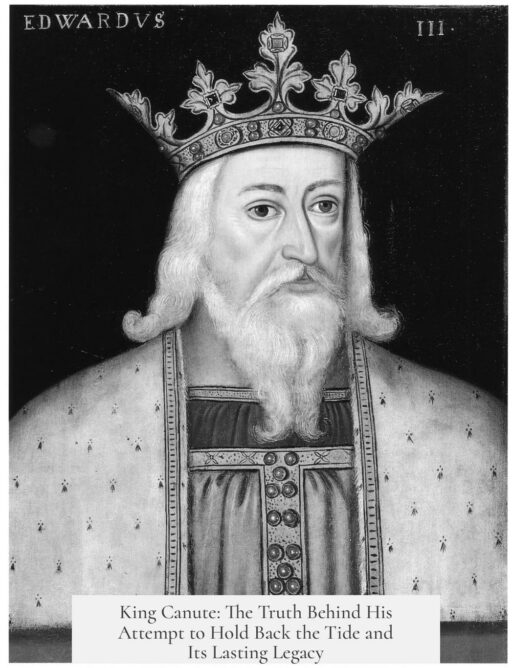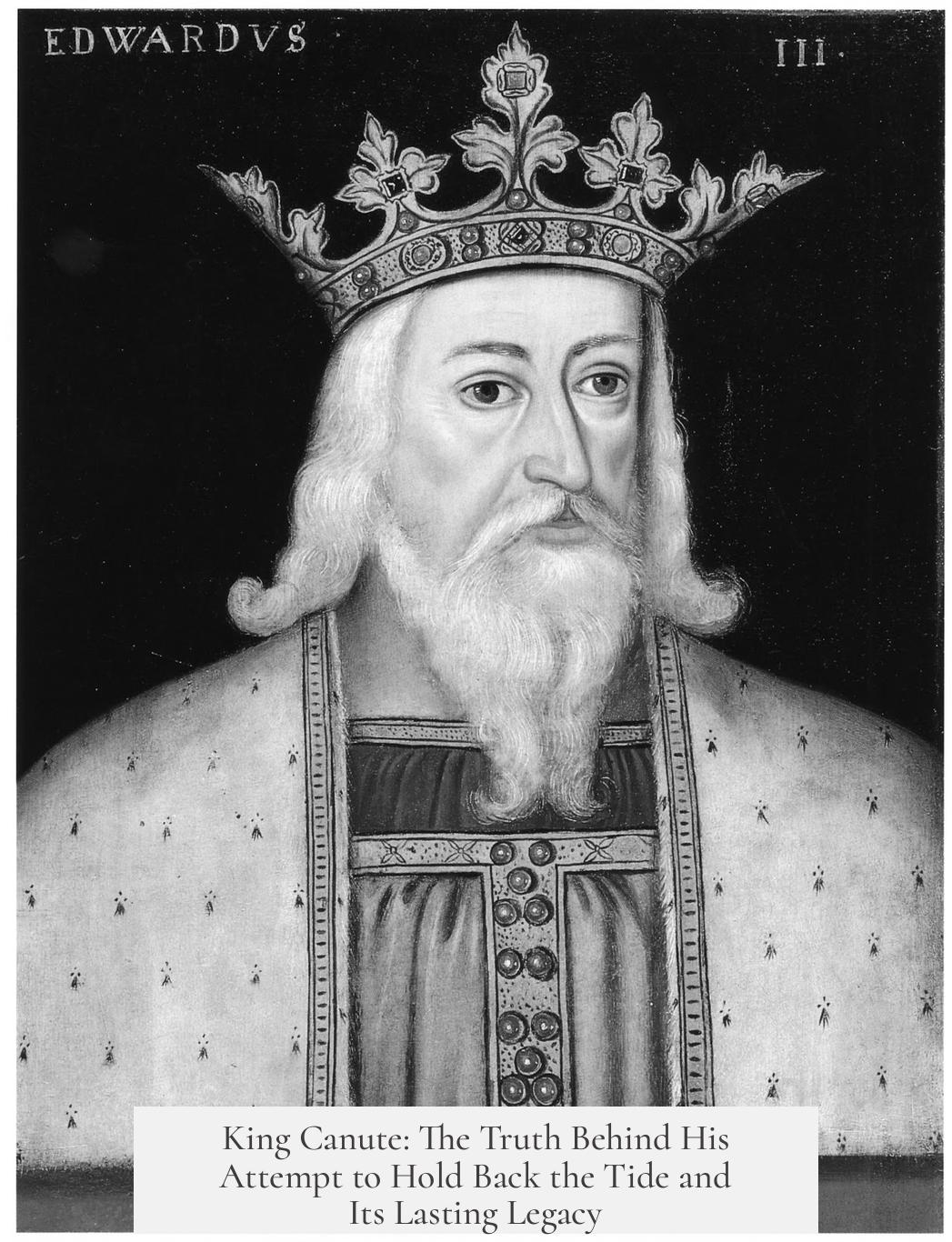King Canute holding back the tide refers to a famous episode illustrating the limits of royal power. According to later medieval sources, King Canute (Cnut) attempted to command the incoming tide to stop, demonstrating that even a monarch cannot control nature. This event first appears about a century after Canute’s death in Anglo-Norman texts such as Henry of Huntington’s Historia Anglorum and Geoffrey Gaimar’s L’Estoire des Engleis. It is generally regarded as a theatrical display of humility rather than a factual incident.
The earliest writings do not come from contemporary chronicles, which are concise about Canute’s reign and omit this story. Scholars doubt the episode’s historicity, as it emerges later in hagiographical or moralizing contexts. Finlay suggests that the story might have originated from saintly legends in late Anglo-Saxon England, blending religious symbolism with royal image.
Interpretations vary on the story’s purpose. Many view it as performative piety, where Canute humbly shows his limits before God. Henry of Huntington’s version even adds that Canute, convinced of divine supremacy, afterward placed his crown on a crucifix. This act emphasizes royal submission to God rather than earthly power. The episode also contrasts Canute’s authority with the court’s expectations, highlighting medieval ideas of kingship shaped after 1066.
Some scholars, like Parker, argue that Canute’s intention was to affirm his status as a sea-ruler, a traditional Norse ideal. The intended audience might have been his Scandinavian housecarls and naval followers. The scene reassures his Danish loyalists that his power relies on mastery over the sea, a symbol of his domain and strength.
Besides humility and political theater, the story supports Canute’s image as a church benefactor. Contemporary and post-Conquest sources agree that he promoted Christianity and donated to religious institutions, blending political and spiritual legitimacy.
The location of the event, according to Gaimar, was near Westminster on the banks of the River Thames. This situates the episode in the English royal heartland, reinforcing its symbolic importance.
| Aspect | Details |
|---|---|
| First Appearance | ~1140s, Henry of Huntington and Geoffrey Gaimar |
| Historicity | Doubted; absent in contemporary chronicles |
| Main Interpretation | Theatrical piety and divine humility |
| Alternative View | Sea-ruler image for Scandinavian followers |
| Location | Thames near Westminster, London |
| Symbolism | Limits of royal power; king’s submission to God |
- This story is a later medieval moral tale, not a verified historical event.
- It highlights Canute’s acknowledgment that natural forces surpass royal will.
- The episode also affirms Canute’s political and religious strategies.
- The Thames near Westminster is the symbolic setting.
King Canute Holding Back the Tide: Fact, Fiction, and Royal Theater
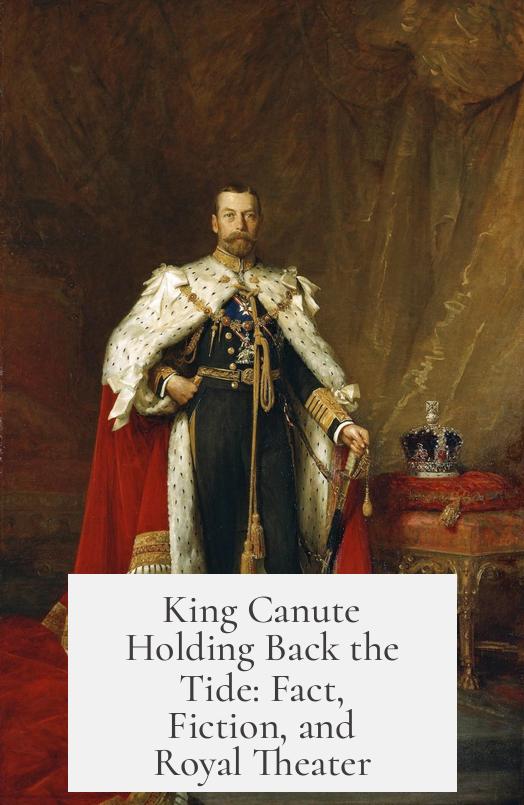
Does King Canute actually hold back the tide? In a word: no. The famous tale of King Canute commanding the sea to halt is not historical fact but a powerful story wrapped in symbolism, theatrical piety, and royal messaging. The legend offers more than a quirky image of a king fighting the absurd—it reveals much about medieval kingship, the power of storytelling, and how rulers wanted to be seen.
Let’s dive into the story’s origins, its meanings, and why this king’s tidal stunt still captures our imagination.
Where Did This Story Begin?

The *first*
appearance of King Canute’s attempt to hold back the tide pops up roughly a century after his death in two Anglo-Norman texts. Henry of Huntington’s Historia Anglorum and Geoffrey Gaimar’s L’Estoire des Engleis are the earliest sources recounting this episode. Neither were contemporary accounts. Instead, these are narratives shaped well after Canute’s reign.
Henry of Huntington even adds a neat little epilogue where Canute stops wearing his crown personally and places it before a crucifix — a strong gesture suggesting humility and reverence. This detail points to a story crafted with a moral or religious lesson in mind.
There’s also a theory by scholar Finlay that this tale might have its roots in “Saints’ lives” traditions common in late Anglo-Saxon England. It wouldn’t be surprising since medieval hagiographies often included miracles or symbolic acts to underline a saint’s divine favor or humility.
But what about the historical facts? Well, contemporary chronicles like the Anglo-Saxon Chronicle are tidy and don’t mention Canute facing off with the sea. Modern historians such as Bolton even skip this story in recent biographies, suggesting skepticism about its literal truth.
Why Does This Tide-Holding Story Matter?
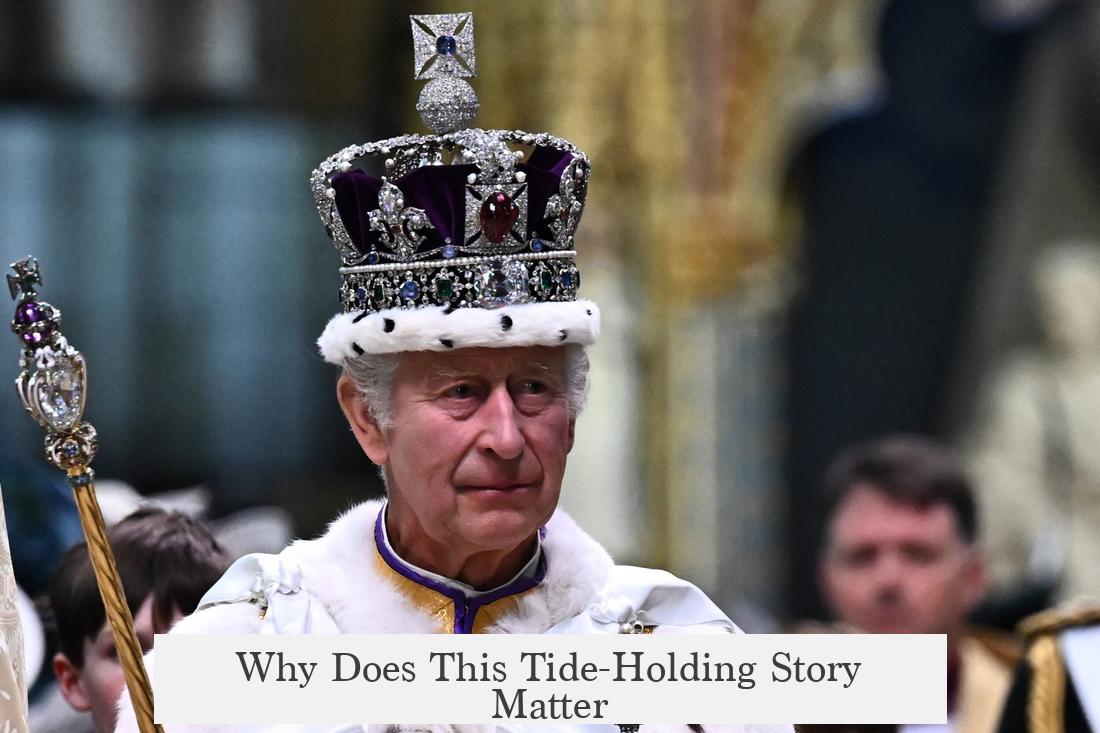
First, let’s clear up one misconception: this isn’t about a deluded king thinking he controls nature. Instead, the episode likely serves as performative piety. Canute isn’t trying to battle the sea but demonstrate his respect for divine authority, showing he knows his place beneath God’s power.
Many scholars agree the main point is theatrical humility—an act grand enough to inspire awe but carefully managing the king’s reputation for power and piety. It’s a show, a kind of medieval PR stunt but for spiritual credit rather than product sales.
On the flip side, historian Parker interprets the event differently. For the Old Norse and Scandinavian context that Canute hailed from, the sea wasn’t just water—it symbolized power and rulership. By standing at the shore and commanding the tide, Canute projected an image of a “worthy sea-ruler,” a concept deeply embedded in Norse kingship traditions.
Who was watching? The primary audience may have been Canute’s Scandinavian military followers, his housecarls, and fleet members. To them, the display reassured the message that their king held sway over the seas, reinforcing loyalty and demonstrating leadership in familiar cultural terms.
This message wasn’t a subtle rebuke but a firm, public reminder: real power rests with those who command the oceans.
There’s More to Canute Than Just Waves
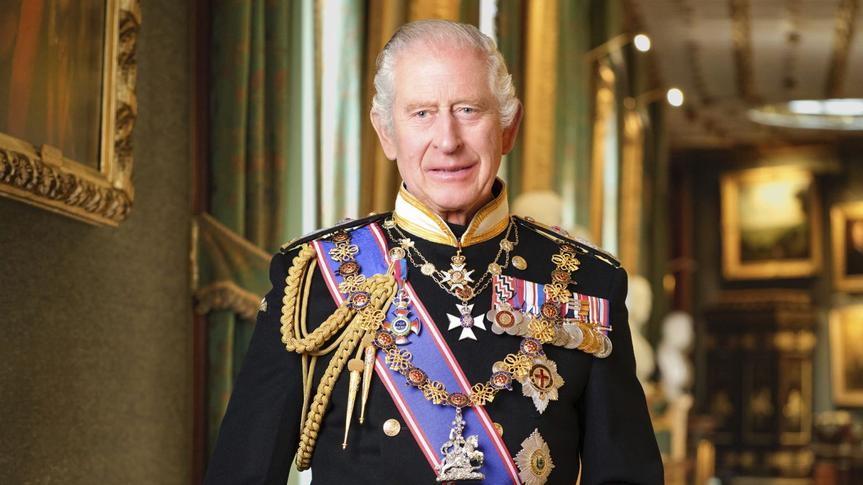
Medieval kings needed to balance strength with humility. Both before and after 1066, Canute carefully cultivated an image of a kind and generous benefactor to the Church. Contemporary and post-conquest texts praise his church donations and support, showing a politically savvy king using religion to cement his authority.
Lawson, another scholar, ties the tide story into Canute’s church policy, emphasizing how such tales supported his role as a pious ruler. This not only solidified his legacy but also helped stabilize his rule over a diverse and often fractious kingdom.
Where Did This Legendary Moment Happen?

Gaimar, writing in Old French, locates the event on the banks of the Thames in London near Westminster. This isn’t just a random beach; this place was at the political heart of England. Imagine standing near the palace, commanding the tide—symbolically asserting control over the natural world at the seat of power itself.
So, What Can We Learn From King Canute’s Tale?
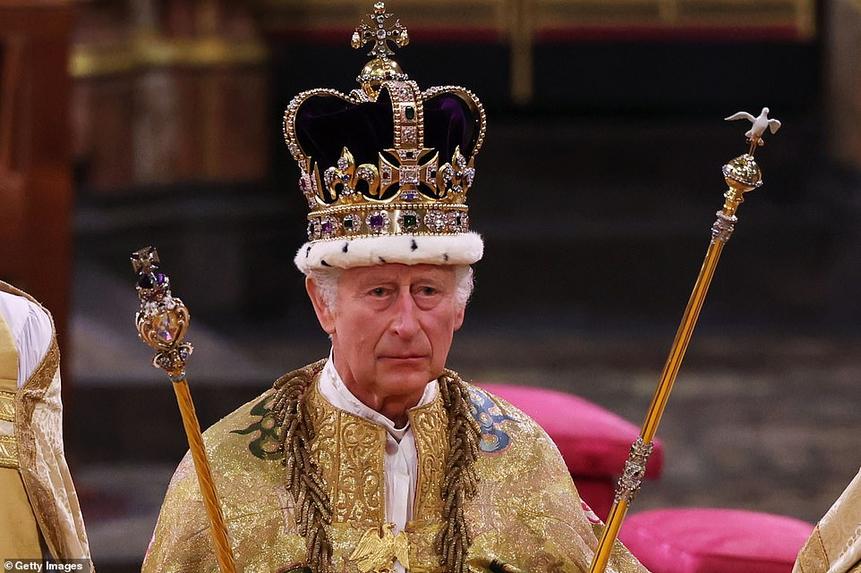
The story of King Canute holding back the tide teaches us several timeless lessons:
- True power has limits: Even the most powerful ruler must recognize forces beyond human control.
- Image is everything: Kings used dramatic acts to shape how others saw their reign and gain loyalty from their followers.
- Symbolism transcends history: Whether fact or fiction, the story persists because it speaks to human themes like humility and leadership.
Can you think of modern examples where leaders stage dramatic moments to prove their authority or values? The tactic remains alive, even if the tides they face are digital or political rather than literal oceans.
Wrapping Up: King Canute’s Legacy Beyond the Tides
King Canute didn’t hold back the tide literally. Instead, his story waves a mighty lesson flag: leadership involves humility, cultural connection, and savvy communication. The tale’s origin in posthumous documents, its likely theatrical and religious purposes, and its strategic audience all highlight how rulers crafted narratives to define their power.
So next time someone says Canute foolishly challenged the sea, smile and know the truth is richer: he staged a royal performance that still echoes through history—a reminder that humility and power often flow together like the tides themselves.
